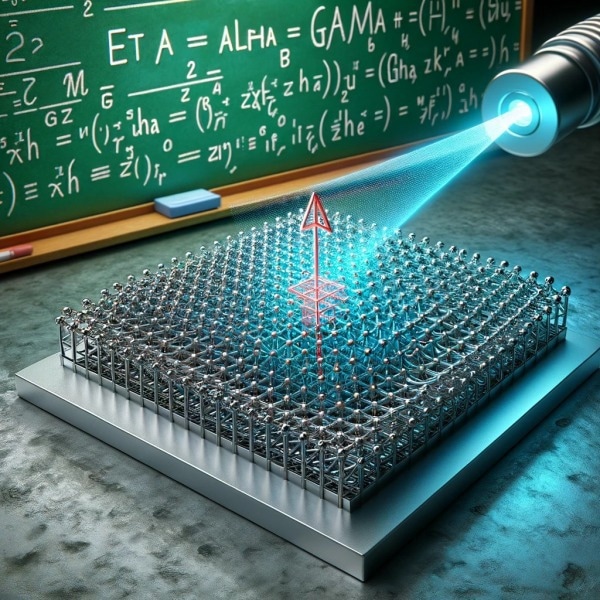A recent study conducted at Hebrew University has shown a hitherto undiscovered relationship between magnetism and light. This finding may pave the way for extremely quick light-controlled memory technology and creative light-magnetic sensor technologies.

Image Credit: The Hebrew University of Jerusalem
This discovery is predicted to completely change the way that devices are made, and data is stored across a range of sectors.
Amir Capua, Professor and the Head of the Hebrew University of Jerusalem's Spintronics Lab at the Institute of Applied Physics and Electrical Engineering, has reported a significant development in the field of light-magnetism interactions. The team's surprising finding shows a process via which an optical laser beam manipulates a solid's magnetic state, offering practical implications across a range of industries.
This breakthrough marks a paradigm shift in our understanding of the interaction between light and magnetic materials, and it paves the way for light-controlled, high-speed memory technology, notably Magneto resistive Random Access Memory (MRAM), and innovative optical sensor development. In fact, this discovery signals a major leap in our understanding of light-magnetism dynamics.
Amir Capua, Professor, Institute of Electrical Engineering and Applied Physics, The Hebrew University of Jerusalem
Through the discovery of the neglected magnetic component of light, which is usually ignored since magnets respond more slowly than light radiation, the study contradicts accepted knowledge. The team's research revealed a novel theory: the power of a fast-oscillating light wave magnetic component to manipulate magnets redefines fundamental physical interactions.
It is interesting to note that a simple mathematical relationship between the amplitude, frequency, and energy absorption of the magnetic material was found to characterize the strength of the interaction.
The discovery united concepts from two scientific disciplines that had not previously had much in common and are closely related to the field of quantum technologies. “We arrived at this understanding by using principles that are well established within the quantum computing and quantum optics communities but less so in the spintronics and magnetism communities.”
When a magnetic material and radiation are in perfect equilibrium, their interaction is well-established. However, up to now, the scenario involving radiation and an out-of-equilibrium magnetic material has only been very briefly described.
The fundamental principles of quantum computing and quantum optics are found in this non-equilibrium realm. Using concepts from quantum physics, we have examined this non-equilibrium regime in magnetic materials and have shown evidence for the basic idea that magnets can react to light on short-time scales. Additionally, the exchange proves to be highly meaningful and effective.
Our findings can explain a variety of experimental results that have been reported in the last 2-3 decades. This discovery has far-reaching implications, particularly in the domain of data recording using light and nano-magnets; it hints at the potential realization of ultra-fast and energy-efficient optically controlled MRAM and a seismic shift in information storage and processing across diverse sectors.
Amir Capua, Professor, Institute of Electrical Engineering and Applied Physics, The Hebrew University of Jerusalem
Furthermore, the group unveiled a unique sensor that could identify the magnetic component of light in conjunction with this discovery. This innovative design, in contrast to conventional sensors, provides adaptability and integration for a wide range of applications, potentially changing sensor and circuit designs that make varied uses of light.
Mr Benjamin Assouline, a PhD Candidate in the Spintronics Lab, carried out the research, which was essential to this finding. Acknowledging the possible significance of their discovery, the group has submitted multiple related patent applications.
The research was funded by the Israel Science Foundation, the Peter Brojde Center for Innovative Engineering and Computer Science, and the Center for Nanoscience and Nanotechnology of the Hebrew University of Jerusalem.
Journal Reference
Assouline, B., et.al., (2024). Helicity-dependent optical control of the magnetization state emerging from the Landau-Lifshitz-Gilbert equation. Physical Review Research. doi.org/10.1103/physrevresearch.6.013012.